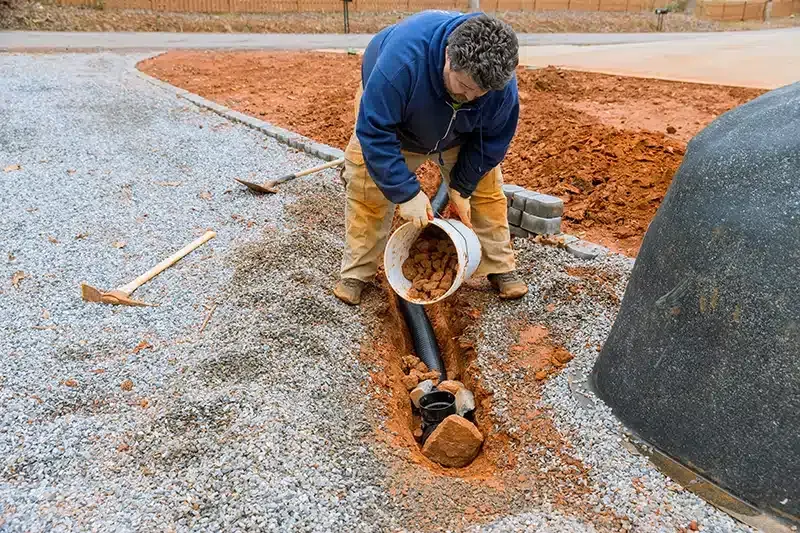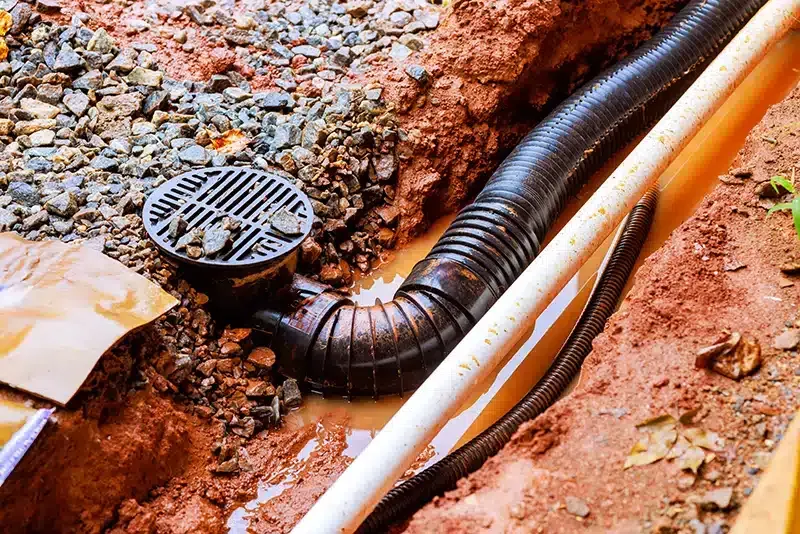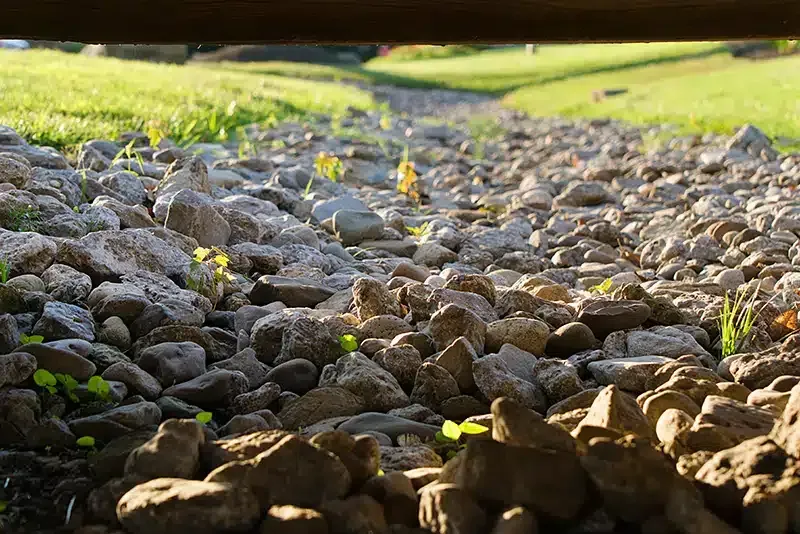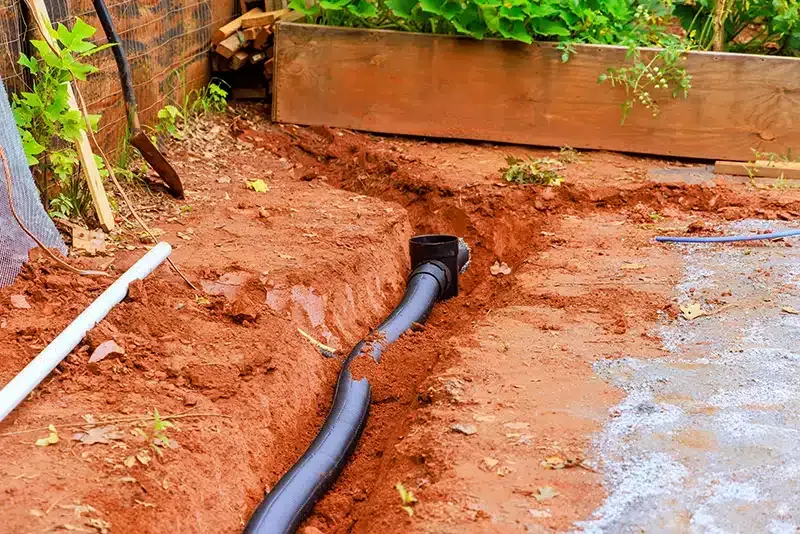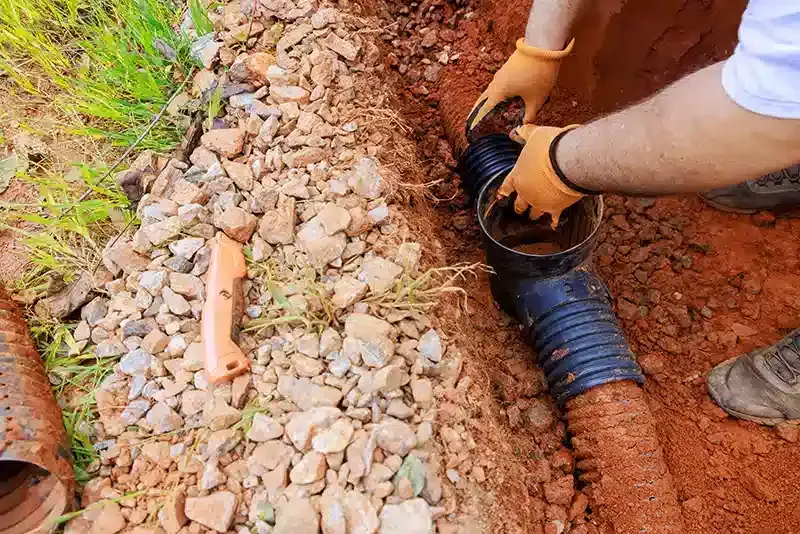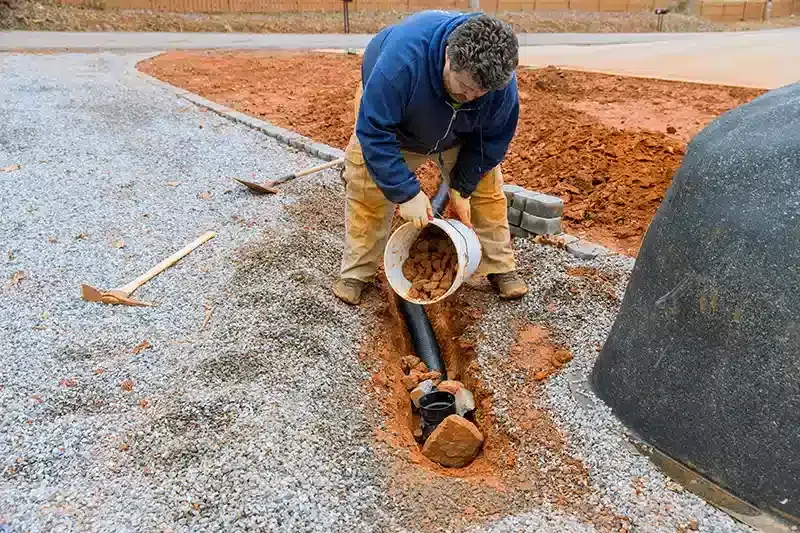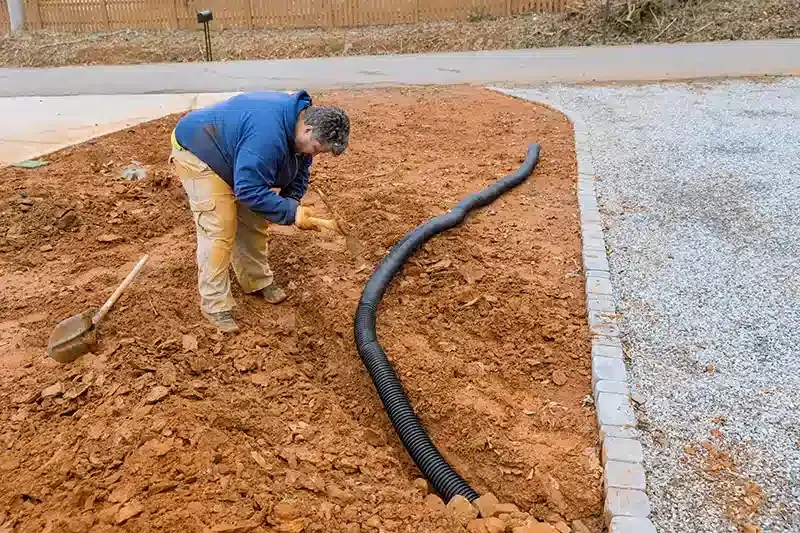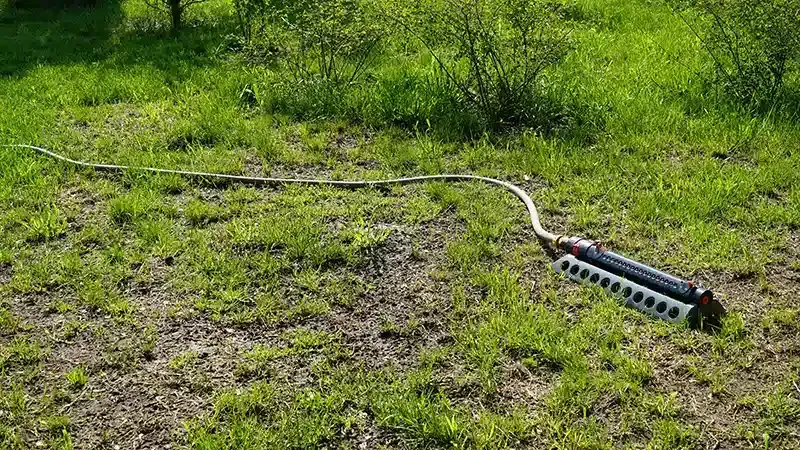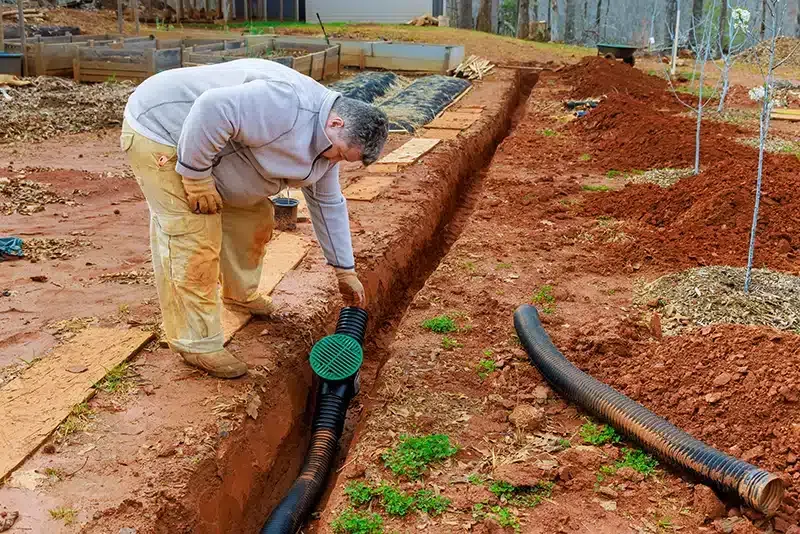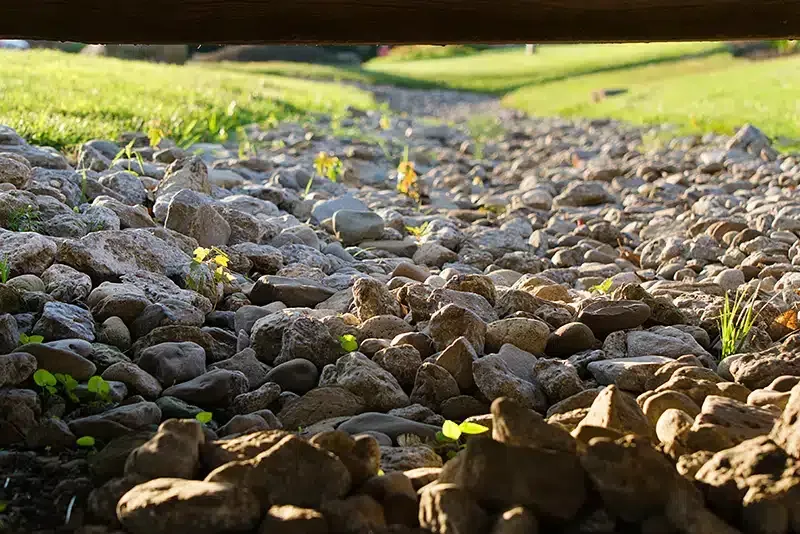Why Is It Important to Address Poor Drainage with a French Drain?
If you've noticed persistent water pooling around your property, it's essential to consider the implications of poor drainage. Ignoring this issue can lead to serious problems like structural damage, mold growth, and even pest infestations.
A French drain might be a practical solution, but understanding its importance goes beyond just installation.
There are significant benefits to addressing drainage issues proactively, and knowing how to implement these systems effectively can make all the difference.
So, what steps should you take to safeguard your home and landscape?
Consequences of Poor Drainage
Poor drainage can have significant consequences for your property, your health, and your overall well-being.
Property Damage:
- Foundation Issues: Water accumulation around the foundation can lead to hydrostatic pressure, causing cracks, settling, and other structural damage.
- Soil Erosion: Standing water can erode soil, leading to uneven ground and potential damage to landscaping features.
Health Concerns:
- Mold Growth: Damp conditions create an ideal environment for mold growth, which can lead to respiratory problems, allergies, and other health issues.
- Pest Problems: Standing water can attract pests such as mosquitoes, which can pose health risks.
Reduced Property Value:
- Unsightly Appearance: Puddles and soggy lawns can significantly detract from your property's curb appeal.
- Buyer Concerns: Potential buyers may be wary of properties with known drainage issues, potentially impacting your property's resale value.
Increased Maintenance Costs:
- Repairs and Remediation: Addressing the consequences of poor drainage, such as foundation repairs and mold remediation, can be costly.
By addressing drainage issues proactively, you can protect your property, safeguard your health, and enhance the overall value of your home.
Benefits of Installing a French Drain
Installing a French drain offers a range of significant benefits for homeowners:
Reduced Risk of Water Damage:
- Directs water away from the foundation, minimizing the risk of basement flooding, water seepage, and foundation damage.
Improved Indoor Air Quality:
- By reducing moisture levels, French drains help prevent mold and mildew growth, improving indoor air quality and creating a healthier living environment.
Enhanced Landscaping:
- Prevents water pooling and soggy lawns, creating a healthier and more vibrant landscape.
Increased Property Value:
- Improves the overall curb appeal of your property, making it more attractive to potential buyers.
Minimal Maintenance:
- Requires minimal maintenance after installation, providing long-term protection with minimal ongoing effort.
By investing in a French drain, you're not only protecting your home from potential water damage but also enhancing its value and creating a healthier living environment for your family.
Installing a French Drain: A Step-by-Step Guide
Installing a French drain requires careful planning and execution. Here's a step-by-step guide:
1. Planning and Preparation:
- Identify Drainage Issues: Carefully observe your property to identify areas where water tends to pool, such as low-lying areas, near downspouts, or around the foundation.
- Determine Trench Location and Path: Mark the path of the trench, ensuring a slight slope (approximately 1-2%) away from your foundation to effectively direct water flow.
2. Trench Excavation:
- Excavate the Trench: Dig a trench with a width of approximately 6 inches and a depth of 18-24 inches. The depth may vary depending on local soil conditions.
- Remove Obstructions: Remove any rocks, roots, or other debris from the trench to ensure proper water flow.
3. Install the Drainage System:
- Line with Landscape Fabric: Line the trench with landscape fabric to prevent soil from entering the drain and clogging the system.
- Add Gravel Base: Place a layer of gravel at the bottom of the trench, typically 3-4 inches deep.
- Install Perforated Pipe: Place the perforated pipe within the gravel bed, ensuring the holes in the pipe are facing downward.
- Cover with Gravel: Cover the pipe with another layer of gravel, leaving approximately 2-3 inches of space to the top of the trench.
4. Backfill and Finish:
- Fold Landscape Fabric: Fold the excess landscape fabric over the gravel layer.
- Backfill the Trench: Backfill the trench with soil or sod, ensuring a smooth and even surface.
- Blend with Landscaping: Blend the area with the surrounding landscape for an aesthetically pleasing finish.
5. Outlet Placement: Ensure the outlet of the French drain directs water away from the foundation and into a suitable drainage area, such as a storm drain or a dry well.
This is a general guide. It's always recommended to consult with a professional landscaper or contractor for proper installation and to ensure compliance with local building codes.
By following these steps and considering the specific needs of your property, you can effectively install a French drain to improve drainage and protect your home from water damage.
Addressing poor drainage with a French drain is a proactive solution that protects your property from water damage, enhances its value, and promotes a healthier living environment.
By understanding the consequences of poor drainage and taking steps to install an efficient drainage system, you can safeguard your home’s foundation, improve landscaping, and prevent costly repairs.
Whether tackling the project yourself or consulting a professional, implementing a French drain is a long-term investment in the safety, functionality, and aesthetic appeal of your home.
